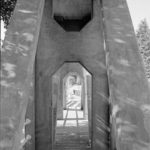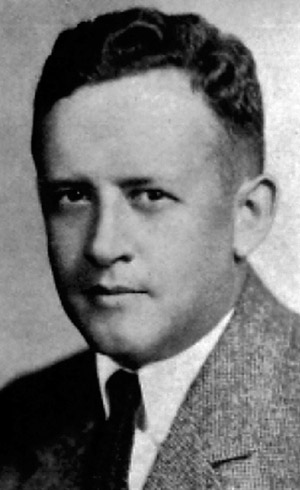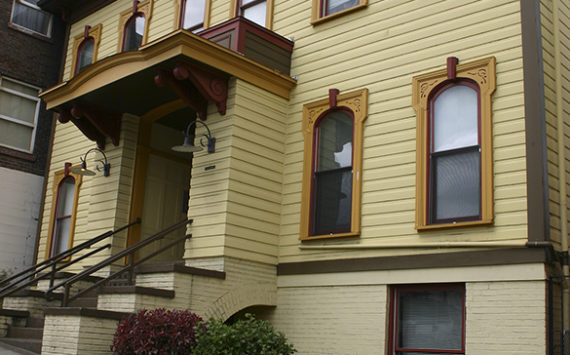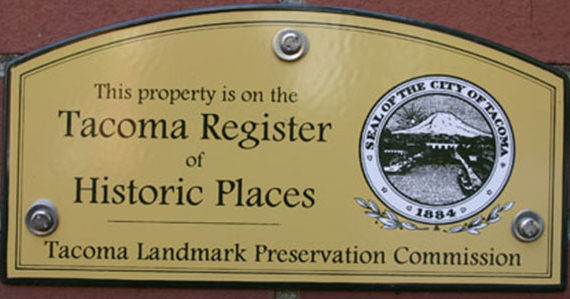The Washington Trust for Historic Preservation announced Thursday it has submitted a nomination to the Pierce County Landmarks and Historic Preservation Commission to place the 78-year-old McMillin Bridge, which is listed on the National Register of Historic Places but faces demolition by the Washington State Department of Transportation (WSDOT), on the Pierce County Register of Historic Places.
“Given the McMillin Bridge’s listing in the National Register, we felt it was appropriate to consider local level listing as well,” wrote Washington Trust for Historic Preservation Field Director Chris Moore in an e-mail sent to WSDOT and forwarded to the Tacoma Daily Index.
The concrete McMillin Bridge, which is owned by WSDOT, has a long history in Pierce County. Built in 1934, it is a vital section of State Route 162 that connects Orting to Sumner. It also sits right next to an old railroad bridge that is now part of the Foothills Trail. For several years now, WSDOT officials have said the McMillin Bridge is functionally obsolete and a new bridge needs to be built. WSDOT plans to build a new bridge just east of the McMillin Bridge and tear down the McMillin Bridge.
The proposal concerns many historic preservationists throughout Washington State and beyond. The bridge was designed by Homer M. Hadley, a man who is famous to bridge engineers and local historians, and whose work contributed to bridges spanning rivers, lakes and creeks throughout Washington State. He pushed for the state to build a floating concrete bridge across Lake Washington. Today, the westbound span of the Interstate 90 floating bridge is officially named the Homer M. Hadley Memorial Bridge.
The McMillin Bridge’s inclusion on the National Register of Historic Places is only an honorary designation with little regulatory bearing other than what is known as “Section 106″ of the National Historic Preservation Act of 1966. In the case of the McMillin Bridge, Section 106 requires that a federal agency consult with a range of stakeholders (also known as “consulting parties”) that includes WSDOT, Pierce County, ACOE, DAHP, the National Trust for Historic Preservation, Washington State University, Washington Trust for Historic Preservation, bridge historians, retired bridge engineers, architectural historians, and even the Society of the Preservation of Historic Cements to determine if demolishing the bridge will have any adverse effects. Because the McMillin Bridge crosses a body of water (the Puyallup River), the lead federal agency in this case is the ACOE. In the end, it’s the Corps that will get to decide whether to issue the permit allowing the new bridge to be built and the old bridge to come down.
Still, WSDOT appears confident that it will eventually receive a permit and move forward with the project. In August, WSDOT project manager Steve Fuchs told the Indexthe bridge design was nearly completed, there are some right-of-way properties to acquire, and utilities still needed to be relocated. WSDOT was “still working to obtain all the permits needed to build the project,” said Fuchs. “We are following the Section 106 process to evaluate alternatives that avoid impacting this historic structure. The Army Corps of Engineers is guiding us through the process because they will ultimately issue the permit to build the bridge.” He added that WSDOT expected to begin construction in Spring 2014, and noted $15 million had been set aside for the project.
Meanwhile, historic preservationists and bridge engineers have sent letters and e-mails urging WSDOT and the ACOE to save the bridge. They argue the McMillin Bridge, reported to be the longest concrete truss bridge in the country, is an engineering marvel for its time. The bridge’s sidewalks run through the trusses rather than beside them, creating a built-in covered walkway for pedestrians. And the thick and sturdy concrete trusses mean there is no need for lateral bracing over the roadway.
The nomination prepared by the Washington Trust for Historic Preservation notes the bridge is an example of “engineering in its most creative, artistic expression. That is to say, the McMillin Bridge is a work of art representing engineering at its finest.”
If you would like to read more about the uncertain future of the historic McMillin Bridge, read “Pierce County’s historic McMillin Bridge has lasted almost 80 years. Can it survive WSDOT?” (TDI, 09/07/12).
For more information about Homer M. Hadley, the McMillin Bridge, and WSDOT’s project, click on the following links:
1. WSDOT’S McMillin Bridge project website
2. WSDOT’s McMillin Bridge public documents website
3. Historic American Engineering Record’s McMillin Bridge photographs and drawings
4. HistoryLink.org’s Homer M. Hadley Biography
5. Washington Trust for Historic Preservation’s “Most Endangered List”














